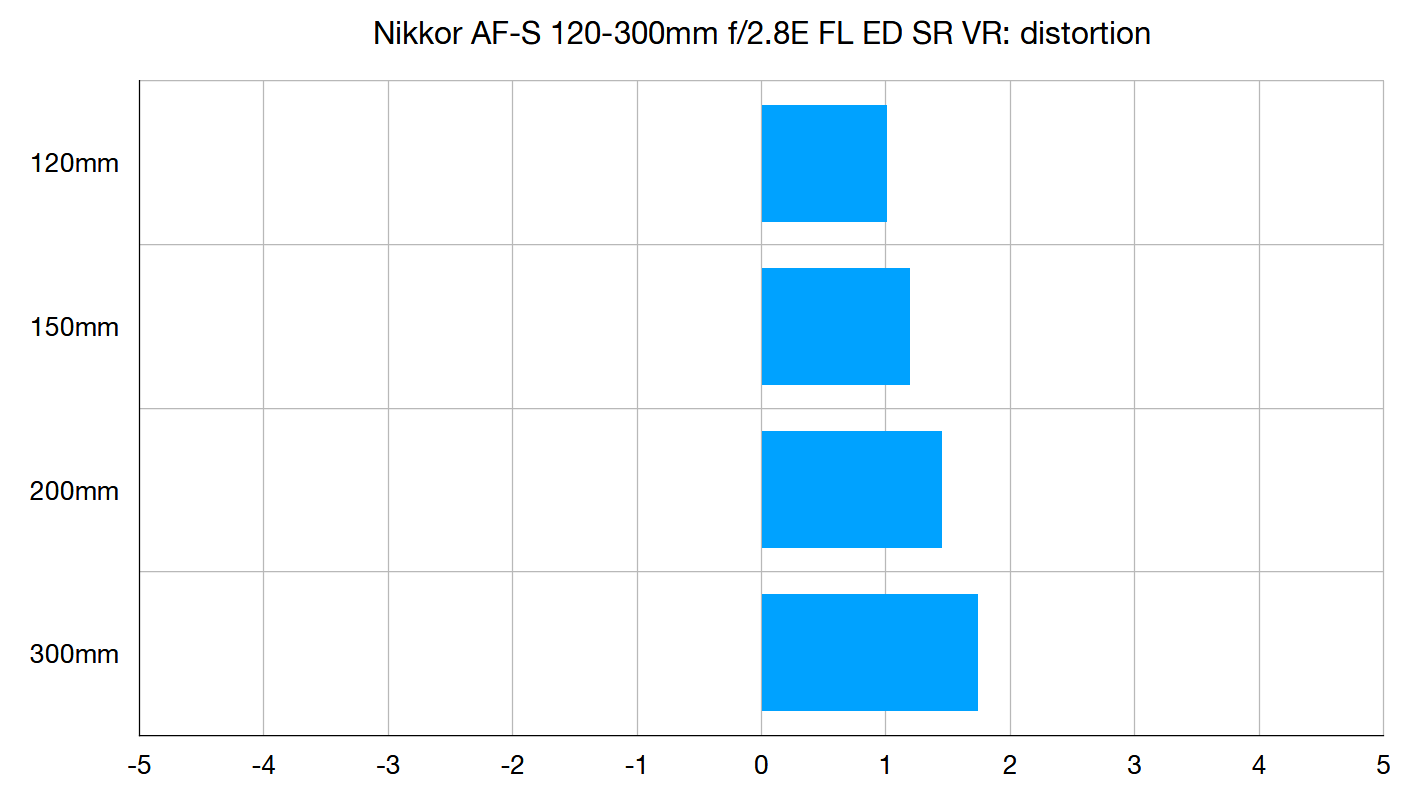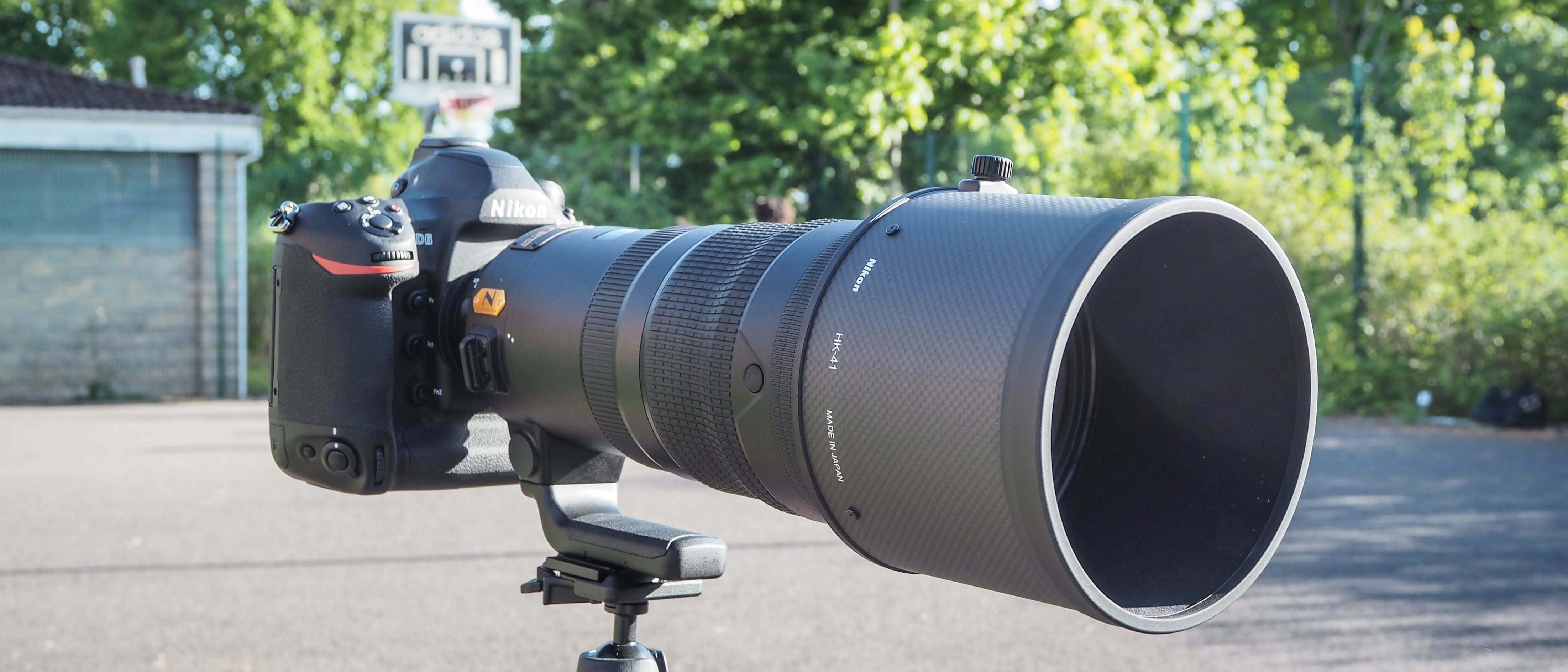Digital Camera World Verdict
The Nikon 120-300mm f/2.8E AF-S FL ED SR VR is a lens with no weaknesses that boasts outstandingly consistent sharpness across its focal and aperture ranges. A near perfect performer, the only question is whether sports photographers will want to add this to their trusty 70-200mm and 300mm combo. If they do, they will be wowed a midrange marvel that's perfect for sports and wildlife – and is also a dang fine portrait lens.
Pros
- +
Incredibly sharp
- +
Outstanding consistency
- +
No weaknesses
Cons
- -
Price
- -
Will pros adopt it?
Why you can trust Digital Camera World
Let's get it out of the way: the Nikon 120-300mm f/2.8E AF-S FL ED SR VR is a lens that costs $9,499 / £9,499 / AU$15,499, and it's probably not meant for you.
It's no coincidence that the Nikon 120-300mm f/2.8E AF-S FL ED SR VR review was released in sync with both the Nikon D6 and the Olympics. Obviously Tokyo 2020 has been postponed, but the target audience is clear from both the timing and the price: this is a professional-grade optic tailor made for pro sports photography.
It has applications beyond this, of course. The 120-300mm focal length makes it one of the best portrait lenses, as well as one of the best lenses for bird photography and wildlife – though a little more reach obviously better behooves the latter.
So, does this hyper-specialist optic warrant its premium price tag – and exactly where does it fit, in a sports world dominated by 70-200mm lenses in the midrange and 200-400mm optics with teleconverters for distance?
Specifications
Mount: F-mount
Full frame: Yes
Autofocus: Yes
Lens construction: 25 elements in 19 groups
Angle of view: 20° 20' - 8°10' (FX format) / 13°20' - 5°20' (DX format)
Diaphragm blades: 9
Minimum aperture: f/22
Minimum focusing distance: 2m
Maximum magnification ratio: 0.16x
Filter size: 112mm
Dimensions: 128 x 303.5mm
Weight: 3,250g






Key features
As you'd expect of a 9K lens aimed at professionals, the Nikon 120-300mm arrives with many of Nikon's best optical technologies.
Features like vibration reduction (offering 4 stops of image stabilization, along with Sport mode for erratic subjects) and electromagnetic diaphragm mechanism (which affords stable aperture control during continuous bursts) are essential for a sports lens like this, and Nikon has spared no expense on the coatings either.
Nano crystal (to eliminate ghosting and flare, particularly from diagonal light sources, and internal reflections), ARNEO (anti-reflective to incident vertical light), fluorine (dust, water, grease and dirt protection) and Super Integrated Coating (to prevent ghosting and flare from backlighting) are all present and correct.
The specially engineered glass is rightly accounted for, too, with fluorite and short-wavelength refractive lenses (to correct chromatic aberration) and extra-low dispersion glass (to compensate for fringing).
Aside from these, the lens' key characteristic is obviously the almost unique 120-300mm focal range (the only other such optic is the Sigma 120-300mm f/2.8 DG OS HSM), which offers a very unusual mid-ground between the usual 70-200mm f/2.8 zooms and 300mm f/2.8 telephotos.

Build and handling
There's a reason why this lens costs almost ten grand: it has 25 massive and precisely engineered glass elements inside it. This is also the reason why it's a bit of a bazooka, at 128 x 303.5mm, and a hefty one at 3,250g.
Of course, that's a big issue if you're mounting it on a body the size of a Nikon D750 – but it's less of a problem if you're pairing it with the Nikon D5 or D6, which are this lens' intended dance partners.
In use, the size and weight aren't that big a deal; we spent two solid days lugging it around and shooting with it for basketball, portraits and light birding. It never once became cumbersome, overheavy or otherwise problematic – though certainly its size limits the amount of kit you can comfortably carry.
The lens is internally focusing, so there is no telescoping when you zoom in or out – which, importantly, means that no moisture, air or particulates can enter the lens via moving weak spots. There is a focus scale and distance markings on the zoom ring, to enable you to zip between ranges if you need to.
Suffice to say, the 120-300mm is supremely solidly built – even though we felt the need to baby it far more than more fragile lenses, a) because there's so much complicated glass floating around inside and b) because we'd have to sell a kidney to replace the darned thing if we broke it.
There is no lens cap, just a large pouch that encompasses the lens and the enormous protective lens hood (and, in turn, an accompanying Nikon-branded backpack that encapsulates the whole lens for transport and protection).

Performance
The Nikon 120-300mm f/2.8E is, in use, a virtually flawless performer. Throughout the zoom and aperture ranges there are effectively no weak spots, weather you're shooting fast-moving sports wide open at 300mm or a still-life scene stopped down at 120mm.
Autofocus, as you would expect (and demand), is lightning quick, snapping to and from subjects as fast as we could frame, shoot and recompose. It had no problem keeping up with the large-scale speed of a basketball game or the twitch movements of goslings.
The stabilization may only be rated at 4 stops, but in practice it felt far more robust. Shooting at 300mm was almost effortless, even when capturing portraits where micro-movements are more noticeable than when trying to chase the movements of players running around a court.
The zoom ring is firm but fair, being stubborn enough to stay put even with a bit of fumbling as you handle the lens, while also gliding throughout the range when you actually do want to push in or out.

Such is a the scale of the ring, and the lens, that you have much more granular control than you experience with a 70-200mm zoom – which is very handy, when you want to achieve that 'in-between' perspective without having to be too prissy with your zooming in the heat of the moment.
As noted, the 120-300mm is actually a perfect portrait lens. Certainly there are superior options in terms of prize and size, and 300mm is clearly a very extreme focal length for portraiture. However, that massive reach achieves remarkable compression – and, combined with the fast f/2.8 aperture, achieves both a beautifully soft depth of field and incredibly flattering features for your subject.
Crucially, and again expectedly, this optic is as ludicrously sharp wide open as it is stopped down. Which obviously isn't just good for sharp eyelashes while you get your blurry background, but it's absolutely vital for shooting sports where you need to keep the aperture wide to achieve the kind of shutter speed necessary to freeze movement while keeping the ISO low.
And this lens really is sharp, delivering incredible results in the center and corners alike, across the entire zoom range. If what you're shooting falls within the 120mm and 300mm boundaries, you're going to get prime-level bite to your images – this really is a very, very impressive optical performer in every respect.
Lab data
Sharpness:
The sharpness figures here are produced by shooting a monochrome test chart covered in multiple sharp boundaries between black and white. This image is then assessed by specialist software, with the extent of blur on the contrast boundaries at the centre and edges of the image converted into a spatial frequency value to determine how many line widths per picture height the lens is capable of resolving. A higher spatial frequency corresponds to a greater number of finer lines over a given distance that the lens can resolve - this number is the sharpness score.
Put simply, the higher the score, the sharper the lens!


Centre sharpness is excellent for an F-mount zoom lens tested on the 20.8MP Nikon D6. Particularly impressive is how consistent the lens sharpness is across the focal range and at all apertures – there are no soft spots anywhere. It's possible the lens might be capable of even higher peak sharpness on a Nikon D850 – the glass is that good.
Corner sharpness is inevitably a little less impressive than in the centre, but the difference is remarkably minor for a telephoto zoom. As with centre sharpness, corner sharpness is exceptionally consistent at all zoom / aperture settings; only at 300mm, at apertures smaller than f/5.6, do we see any sign of sharpness drop-off – and even then it's minimal.
Fringing:
Chromatic aberration is an unwanted color fringe – usually purple – lining a sharp boundary of high contrast in an image. We calculate the severity of this aberration using the same chart used for measuring sharpness. This time the processing software assesses the sharp black-white contrast boundaries and determines the width in pixels of the color fringe that divides black from white. The larger the width of the fringe, the greater – and worse – the fringing score.

There's not a lot to see here, which is a good thing, as it shows the that 120-300mm f/2.8E generates essentially no chromatic aberration at any focal length or aperture. It's this kind of near-flawless performance that you pay $9,500 for.
Distortion:
We measure the degree of distortion produced by a lens using horizontal black bars at the top and bottom of our lens test chart. A lens that bulges these lines towards the edges of frame produces barrel distortion, the degree of which is indicated by a negative score. Shrinking (pincushion) distortion, usually produced by a telephoto lens, produces a positive score. The higher the number, positive or negative, the greater the distortion. A score of zero indicates no distortion.

Unsurprisingly for a telephoto lens, the Nikkon 120-300mm f/2.8E AF-S FL ED SR VR produces some pincushion distortion at all focal lengths. However, it is consistent and is never pronounced enough to be noticeable unless you're shooting very geometric subjects. This distortion can also be corrected in-camera, though we disable all in-camera optical enhancements when testing to ensure a level playing field in the lab.

Verdict
The Nikon 120-300mm f/2.8E AF-S FL ED SR VR is exactly what you expect from a professional lens with this price tag: it has no weaknesses and is outstandingly consistent in its performance.
And it's this outstanding consistency – with remarkable sharpness across the frame, across the focal range and across the apertures – that you're paying the big bucks for. Those bucks, however, are very well spent for a near-perfect performer that will more than deliver everything a professional shooter demands.
All that said, it remains to be seen whether this almost-unique zoom range will actually be adopted by the pro sports photographers at whom the lens is targeted. On paper, the 120-300mm focal range fills a gap between the 70-200mm zoom and the 300/400mm telephoto pairing that many sports shooters swear by.
It could transpire that this is a lens designed by engineers to fill a perceived gap, rather than a lens designed because pros are actually clamoring for it (given that few actually bother covering the 100mm gap between their 70-200mm zoom and 300mm telephoto).
Still, those who do embrace this lens will find a spectacular and versatile performer that covers the critical middle ground for sports and wildlife, and delivers pristine portraits into the bargain.
Read more:
The best professional camera: which pro camera system is best?
The best lenses for bird photography
Best telephoto lens: top zooms for your camera

James has 22 years experience as a journalist, serving as editor of Digital Camera World for 6 of them. He started working in the photography industry in 2014, product testing and shooting ad campaigns for Olympus, as well as clients like Aston Martin Racing, Elinchrom and L'Oréal. An Olympus / OM System, Canon and Hasselblad shooter, he has a wealth of knowledge on cameras of all makes – and he loves instant cameras, too.


